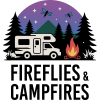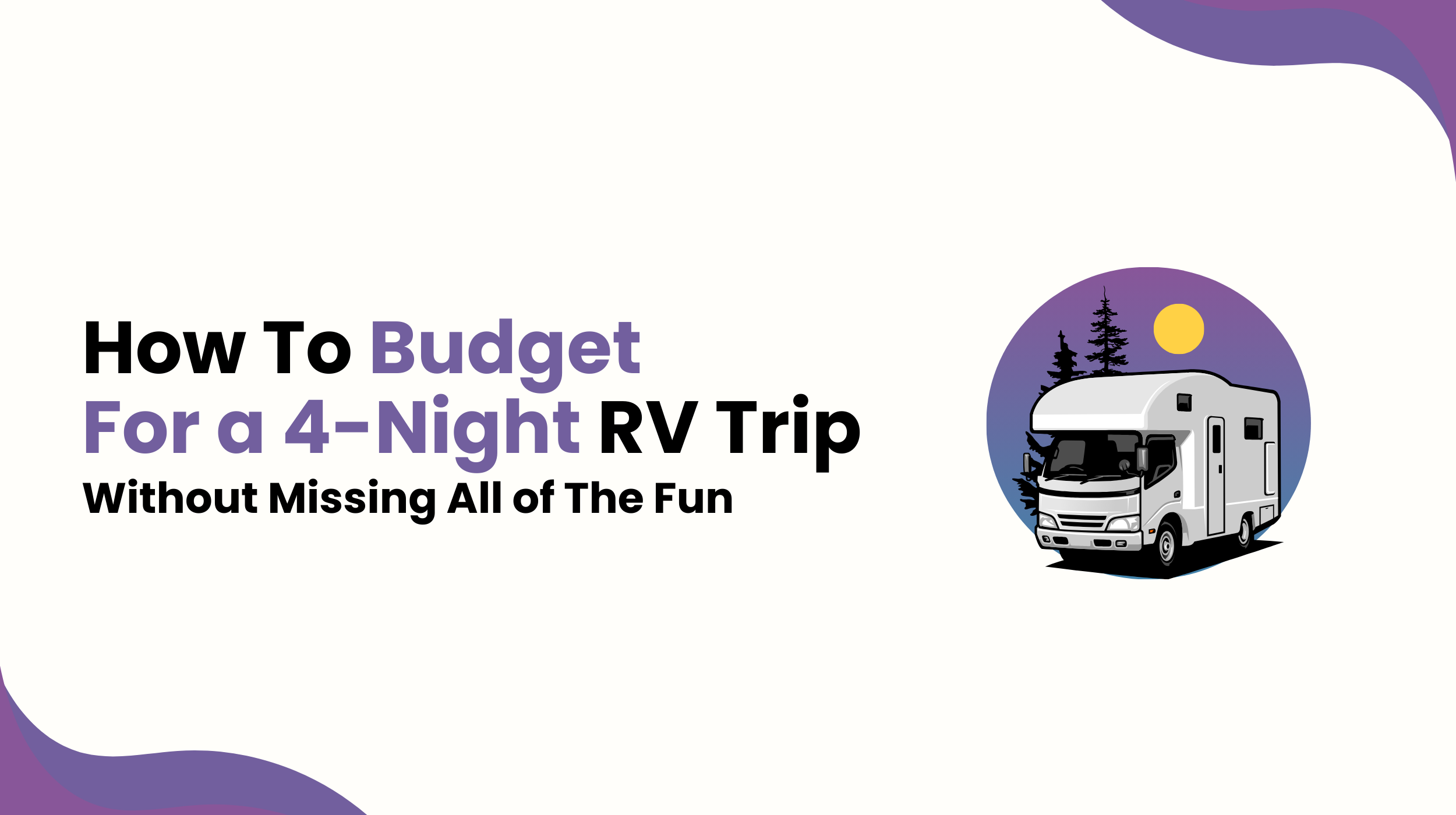A short RV vacation doesn’t have to break the bank. In fact, with a bit of planning and the right mindset, you can create an unforgettable four-night adventure that fits your budget without sacrificing the joy of the open road. Whether you’re traveling solo, as a couple, or with your family, it’s totally possible to keep costs low and memories high. The key? Focus on simplicity, smart spending, and meaningful moments. The quick version: keep your route local to save on gas, stay at affordable campgrounds or use membership discounts, cook most of your meals, and dive into free or low-cost activities like hiking, swimming, or beach days. Let’s take a closer look at how to stretch your dollars while soaking in the RV life.
Start With a Fuel-Efficient Route
Your biggest savings opportunity starts with where you choose to go. While it’s tempting to hit the road and log miles, gas costs can quickly devour your budget, especially in a Class A motorhome or a gas-hungry tow vehicle. Instead of driving hundreds of miles, look for destinations within a two to three-hour radius of home. For example, if you’re based near Denver, consider a loop through Estes Park and Rocky Mountain National Park instead of hauling all the way to Moab. Not only does this reduce fuel costs, but it also gives you more time at your destination, which is the whole point.
There are plenty of apps that help you plan your route based on the cheapest gas stations along the way. GasBuddy and RV LIFE Trip Wizard are favorites among seasoned RVers. Use them to avoid backtracking, find the lowest fuel prices, and even spot road conditions that could cost you time and money. A well-planned route doesn’t just save money—it also saves stress.
Choose Campgrounds That Make Cents
Campground selection is another area where smart planning pays off. Private RV parks often come with nice perks, such as swimming pools, laundry facilities, and Wi-Fi, but they can also be quite expensive, costing $70–$100 per night. On a short trip, that adds up fast. State parks, national forests, and Corps of Engineers campgrounds typically offer lower nightly rates, often ranging from $20 to $40, and feature beautiful, natural settings. If you’re willing to skip the hookups for a night or two, boondocking on BLM land or in designated dispersed camping areas can be a free option. Just make sure it’s legal, safe, and you’re following Leave No Trace principles.
You can also score solid savings with campground memberships. Good Sam offers 10% off at a huge network of campgrounds. Passport America is even better for short-term trips, giving up to 50% off participating parks. Thousand Trails, Harvest Hosts, and Boondockers Welcome are great long-term options if you plan to RV frequently. One well-timed membership can easily pay for itself over the course of your trip.
Cook Simple Meals and Embrace the Campfire
One of the biggest mistakes new RV travelers make is eating out for every meal. While a roadside diner or seaside clam shack can be a fun splurge, eating out adds up quickly. Stock your RV fridge or cooler with groceries before you leave and plan to cook the majority of your meals. Even basic meals, such as pasta with marinara, grilled sausages and peppers, or a simple stir-fry, can feel special when enjoyed at your picnic table.
Don’t underestimate the joy of a campfire meal. Whether it’s foil-wrapped potatoes and chicken, skewered kebabs, or marshmallows for dessert, cooking over a fire adds atmosphere without adding to your bill. Many campgrounds sell bundles of wood, or you can bring your own if allowed. If you’re feeling creative, bring a cast-iron skillet and try your hand at campfire nachos or a skillet breakfast hash.
Want to make things easier? Pre-cook a few meals at home, freeze them, and reheat them in your RV oven or microwave. It’ll save you time and cleanup, especially on travel days when energy is low.
Make the Most of Free or Low-Cost Activities
When it comes to entertainment, the outdoors is your best friend. Hiking, swimming, bird watching, stargazing, beachcombing, and paddling are all free or nearly free activities, and they deliver rich experiences that no theme park can match. Many state and national parks offer ranger-led programs or junior ranger activities for kids, which can make a family trip even more engaging.
If you’re near a town or city, look up free museum days or cultural events in your area. For example, the San Diego Museum of Art offers free admission on select Tuesdays, and many coastal towns have public piers and beaches that provide free parking and amenities. Farmer’s markets are another great stop—walk around, listen to local music, grab a few snacks, and soak up the scene.
Campgrounds themselves can also be entertainment hubs. Many host movie nights, bingo games, scavenger hunts, or outdoor yoga sessions. Don’t overlook the community board at the front office—there’s often a schedule of events or local happenings that are totally free to join.
Set a Realistic Budget and Track It
One of the smartest things you can do is sit down before your trip and set a total spending limit. Let’s say you want to keep your four-night RV getaway under $600. Break it down: maybe $120 for campgrounds, $130 for fuel, $100 for food, and the rest for fun, firewood, or the occasional ice cream stop. Use a spreadsheet, notebook, or a travel budget app like Trail Wallet or EveryDollar to keep track of your expenses as you go.
Tracking your spending doesn’t have to be tedious. Make it a quick end-of-day check-in: What did we spend today? Are we still on target? This small habit can prevent overspending and help you feel more in control—plus, it helps you plan better for your next trip.
What Should You Actually Budget For a 4-Night RV Trip?
Let’s look at the numbers more closely. Campground costs will vary depending on your mix of locations. A basic state park might be $25 per night, adding up to $100 for four nights. A single night at a higher-end RV resort with amenities might run you $80. Mixing these helps keep things balanced without sacrificing comfort.
Fuel is heavily influenced by your rig and the route you take. If you’re pulling a 30-foot trailer with a pickup, a 300–500 mile round-trip might use $100–$150 in fuel, especially with current prices. You’ll spend less if you stay closer to home, and more if you plan to hop multiple destinations.
Groceries for a couple can be surprisingly affordable. A few simple breakfasts, sandwiches, or wraps for lunch, and campfire dinners could cost you $60–$80, depending on how you shop. Add in a restaurant meal or two, and you might hit $100. Families will spend more, but preplanning and bulk items (like pancake mix or pasta) help stretch each dollar.
Activities can range from free (a sunset hike or a day at the lake) to a little pricier if you’re doing things like renting kayaks, taking a wildlife tour, or visiting a small attraction. For budgeting purposes, a budget of $50–$100 provides wiggle room for something memorable without going overboard.
Overall, a frugal four-night trip can be done for as little as $350–$400. If you want to indulge a little—maybe a nice dinner, a resort-style campground, or a paid activity—you might land closer to $600–$700. Either way, it’s a fraction of the cost of a hotel-based vacation, and you get the freedom and flexibility of RV travel.
The magic of RV travel isn’t in how far you go or how much you spend. It’s in watching the sun rise through your camper window. It’s in roasting marshmallows as kids laugh nearby. It’s in waking up to the sound of waves or the smell of pine trees. With the right planning, a short trip can deliver everything you need: rest, adventure, and quality time.
So go ahead, grab your calendar, pick a spot, and start planning. With a smart route, good campground choices, and a little creativity in the kitchen, you’ll be amazed at how far your dollars can take you.

